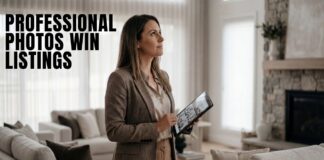Already, 8 of 10 people aged 65 years and older live in metropolitan areas. The Milken Center Institute calls cities “ground zero for the demographic shift” happening in America as by 2030, it is estimated that 3 of 5 people living in the US will be living in cities.
More age-friendly or age-forward cities, according to the Milken Center Institute, have already launched key initiatives to become even more age-friendly. Urban experts have identified priorities that would help age-forward cities realize their goals.
Two such key priorities related specifically to the housing market include…
- The most critical policy intervention- providing housing that is safe and affordable.
- An economic development strategy most critical to address challenges of a population aging in cities – expanding age-friendly commercial districts and housing developments.
The Milken Center Institute has identified more age-forward, age-friendly cities that have already launched some of its priorities to assist aging populations: New York City, Los Angeles, Pittsburg, West Sacramento, Louisville, Kansas City, Washington DC, Chicago and Tampa.
Los Angeles has already embarked on a regional Purposeful Aging project to make Los Angeles “the best place to grow old in the world” by offering affordable and accessible transportation, safer sidewalks and streets, preparing a health care workforce and preventing and responding to wandering among people with dementia. This Purposeful Ageing project, however, does NOT mention housing.
Tampa, the city with the largest population of older adults in the US, is creating the country’s first Age-Friendly Public Health System in conjunction with the city’s Public Health Department. Tampa, however, is also not mentioning housing for older adults in its plans or priorities to facilitate aging in its city’s borders.
The Milken Center Institute for the Future of Aging has identified the Best Big Cities” and the “Best Small Cities” for aging populations. You’ll notice that nowhere is there a reference to the sunny retirement communities of Florida and Arizona. Instead, you’’ notice references to college towns that tend to be centers of employment, transit, health care, housing options and infrastructure. Take a look:
Best Big Cities Best Small Cities
Provo-Orem UT Iowa City IO
Madison WI Manhattan KS
Durham-Chapel Hill SC Ames IO
Salt Lake City UT Columbus MO
Des Moines-West Des Moines IO Columbia MO
Austin-Round Rock TX Sioux Falls SD
Omaha NB Ann Arbor MI
Council Bluffs IO Ithaca NY
Jackson MS Lawrence KS
Boston-Cambridge-Newton MA Logan UT
San Francisco-Oakland-Hayward CA Fairbanks AK
Thanks to Richard Eisenberg of Next Avenue for source data.
Also read: Critical Inventory Shortages Could Last into 2022 and Beyond, 7 North American Cities Most At Risk of Crash, Housing Affordability Hits African Americans Hardest
























